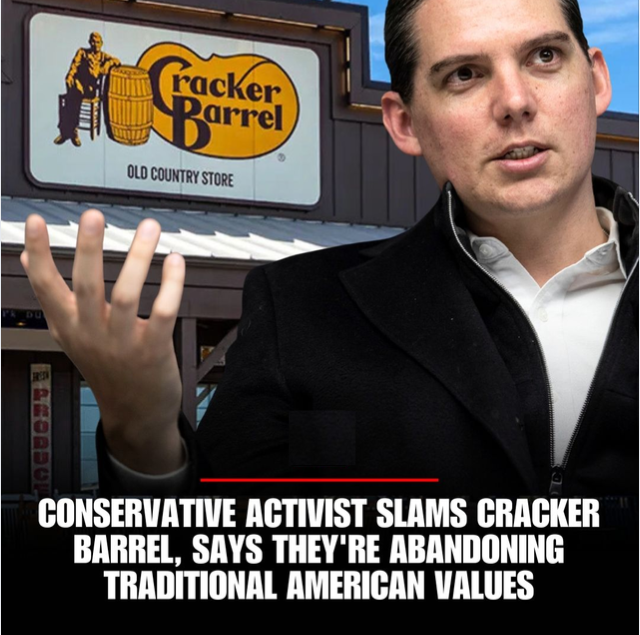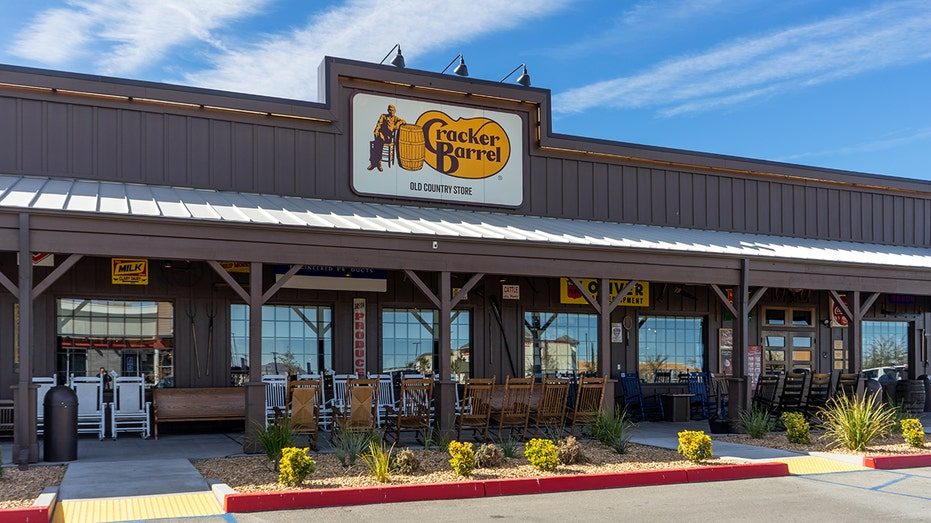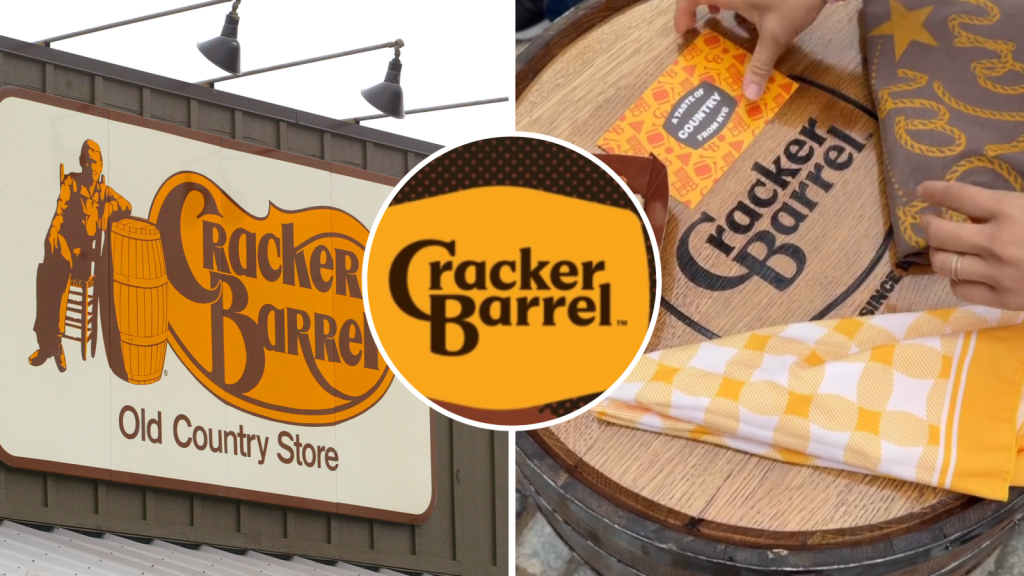Cracker Barrel has long been a symbol of traditional Americana, offering comfort food, rustic décor, and a nostalgic reminder of simpler times. But recently, the company unveiled a sweeping rebrand—one that replaced its classic logo of a man leaning on a barrel with a simplified wordmark and refreshed interiors styled in a “modern farmhouse” theme.
For some, this shift represents progress and modernization. For others, it feels like a betrayal of the brand’s roots. The controversy has ignited fierce debate, with critics like conservative activist Robby Starbuck accusing the chain of abandoning the very identity that made it successful.
So what exactly happened, and why has this redesign turned into a cultural firestorm? Let’s break it down.

The Cracker Barrel Rebrand: A Bold Step Into Modernity
The rebrand wasn’t just a new logo—it was a complete transformation of Cracker Barrel’s image. Out went the old-fashioned emblem of a man resting on a wooden barrel. In came sleek, modern typography paired with brighter, more open interiors that feel like a farmhouse pulled into the 21st century.
The company framed the move as an effort to stay relevant with younger audiences and to create an atmosphere that blends comfort with modern sensibilities. For corporate leadership, it was about growth and adaptation. But for longtime fans, the change struck a very different chord.
Video: Stock PLUNGES after Cracker Barrel’s ‘woke’ rebrand sparks outrage
Robby Starbuck’s Criticism: “Rejecting Their Own Roots”
Conservative commentator Robby Starbuck quickly became one of the loudest voices against the rebrand. He accused Cracker Barrel of rejecting its “redneck old image,” a phrase he used to describe the down-home character of the brand that resonated with working-class Americans.
Starbuck went further, suggesting this wasn’t just about branding but about cultural erasure. In his words, “The American people are sick of having our culture and heritage stripped from us.” For him, Cracker Barrel’s redesign wasn’t modernization—it was betrayal.
He even described the move as “Brand Destruction 101,” arguing that by turning its back on heritage, Cracker Barrel risks alienating the very customers who built its reputation.
The Company’s Defense: Values Remain Intact

Despite the backlash, Cracker Barrel insists its core values remain unchanged. Company spokespeople emphasized that icons like “Uncle Herschel”—a beloved figure tied to the brand’s history—still live on in the menu and restaurant experience.
According to executives, the new look is meant to expand the customer base while staying rooted in hospitality and tradition. In their view, changing the packaging doesn’t mean abandoning the product. They maintain that the essence of Cracker Barrel—comfort food, warm service, and a sense of community—remains untouched.
Market Impact: Stock Tumbles After the Reveal
The controversy hasn’t been confined to social media debates. On Wall Street, Cracker Barrel’s stock took a hit, dropping as much as 7% in a single day following the announcement of the new logo and design strategy.
Investors worried that alienating loyal customers could hurt sales, especially when the chain is already competing in a crowded restaurant market. For shareholders, the backlash underscored a key business question: was this rebrand a smart investment in the future, or a risky gamble that might backfire?
Cultural Backlash: Woke Accusations and Political Heat
Video: Cracker Barrel’s New Rebrand Wins UGLIEST Marketing Ploy Of The Year
Beyond finances, the rebrand quickly became a cultural flashpoint. Critics in conservative circles accused Cracker Barrel of bowing to “woke” trends—suggesting the company was chasing a progressive image instead of celebrating traditional American heritage.
This critique tapped into a broader national debate about how much companies should change to appeal to new demographics. Is modernization simply good business? Or does it come at the cost of erasing cultural identity?
For supporters of the rebrand, modernization is survival in an era when brands must compete for attention across multiple generations. But for opponents, it symbolizes a loss of authenticity in the name of trendiness.
Competitors Weigh In: Steak ’n Shake Throws a Jab
Adding fuel to the fire, rival chain Steak ’n Shake even criticized Cracker Barrel’s new direction. They suggested the brand had “abandoned history” in an effort to appear fresh and modern. This kind of commentary shows just how high the stakes are in the casual dining sector, where tradition and image play a massive role in consumer loyalty.
Cracker Barrel, however, doubled down, insisting its redesign still reflects the company’s heritage—just in a more contemporary way.
Social Media Reactions: A Nation Divided

If one thing is clear, it’s that the American public is split down the middle. On Facebook, Threads, and X (formerly Twitter), debates erupted almost instantly. Some fans praised the clean, modern look as refreshing and necessary for survival in a changing market. Others felt betrayed, calling the rebrand an insult to the “real America” that built Cracker Barrel’s success.
The online arguments reflect a deeper cultural divide, one that mirrors the broader political and social conversations happening across the country.
Conclusion: A Rebrand That’s More Than Just a Logo
The Cracker Barrel controversy proves that a logo is never “just a logo.” For some, it’s a symbol of progress and staying relevant. For others, it’s a painful reminder of cultural traditions being stripped away.
By replacing a rustic emblem with a modern wordmark, Cracker Barrel unintentionally ignited a nationwide debate about identity, heritage, and what it means to stay true to your roots. Whether this bold move will strengthen the brand or weaken it remains to be seen. One thing’s for sure: the conversation around this rebrand has made Cracker Barrel more talked about than ever before—and in today’s world, attention is the most valuable currency of all


